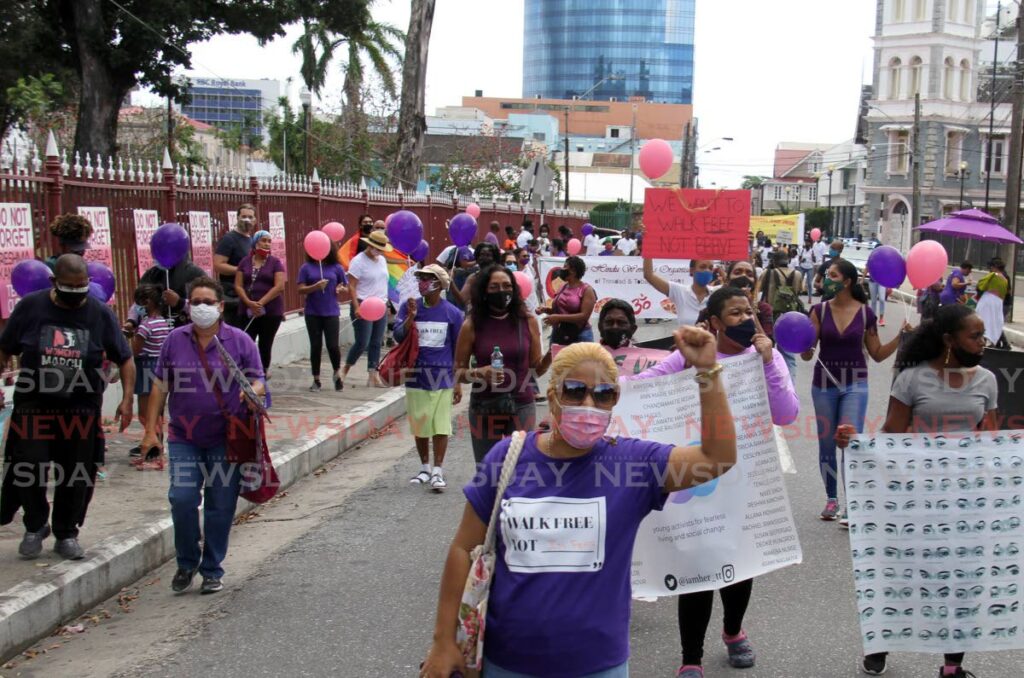We can break the bias

This year’s International Women’s Day was aptly themed Break the Bias. A bias can be an unconscious, unfair and often an unreasoned preference or judgment towards a specific segment of people that might be skewed due to a past experience, personal upbringing and cultural conditioning.
Although scientists have identified up to 150 different biases, I will focus on some of the workplace biases, especially those with a continual impact on gender roles.
At this juncture and before I proceed, it must be noted that women in this country have broken many “glass ceilings.” We are fortunate that we live in a society where females have held the highest offices, can access medical care and all levels of education; have access to scholarships and other institutions. Indeed, for several years we have seen women dominating in academics and filling positions in industries socially viewed as "male-dominated" fields.
However, we know that we are still not a perfect society and in every workplace, employees enter with their own beliefs and what they consider socially acceptable norms that create an undercurrent of biases. These lead to organisational norms and accepted corporate culture which would form part of its operation.
Remember the Drucker quote, “Culture eats strategy for breakfast.”
As an example of one bias, imagine in this 21st century, I know some businesses that refuse to consider applications from female candidates for certain executive positions, at a time when so many women are filling traditional male functions.
I remember once where when top-level positions were mainly held by persons of a particular skin colour and classism and chauvinism were a societal norm.
Women usually adopt the role of caregiver in the home and as such may require more time off. They may have to postpone opportunities for advancement and social outings that will afford them networking opportunities. However, less time in the office does not necessarily equate to a lower level of productive contribution.
The pandemic has highlighted just how uneven the situation is for women, who have to bear the greater responsibility with children at home, ensuring online schooling and care needs are met. Many workplaces have tried to support workers in this situation by allowing work from home. However, the expectation of caregiving responsibilities among women is a societal bias by itself.
Studies have shown that the traits used to describe successful leaders are stereotypical male behaviours that should be dominant, ambitious, aggressive and rational. It is also shown that performance or succession management processes are built on other male stereotypical traits.
Managers often rely on “fit” characteristics that are familiar to them when selecting candidates and would hire who they like and reject the unfamiliar. While most HR professionals are females, they are usually not the final decision-makers for high-level positions. Those who therefore consider the above “fit” qualifiers are those males in higher executive positions.

There are a higher number of reports of workplace harassment and domestic violence from women than from men, a disturbing trend that continues to permeate organisational structure. Is it because women have always been determined weaker and easier targets?
These biases will weaken how we manage talent and can defeat opportunities and aspirations for diversity, inclusivity and equity.
There are, of course, some actions that can be taken to tackle the problem. I ascribe to having formalised and standardised processes and sticking to them. When it comes to people decisions such as hiring, promoting and performance management, they should be skills-based, transparent and always scrutinised in order to reduce bias and subjectivity. These requirements will remind decision-makers that their choices must be able to pass the “smell test.”
Using data and analytics that will challenge assumptions and best guesses can help identify those processes that may be prone to biases. For example, if you have a higher attrition rate or transfer requests in one particular department, then investigate and find out why.
According to a global gender report in 2020 women represented 39 per cent of the global workforce, but accounted for 59 per cent of job losses.
A company can also examine itself to determine if they operate with a gender pay gap. From a global perspective the popular view has moved in favour of “equal pay for equal work.” It would best serve progressive, modern businesses to standardise and execute policies that strive to maintain this central objective.
Organisations should also encourage work-life balance for all, for example, granting paternity leave for fathers, who need to assist their partners during this exciting, yet highly challenging stage of life.
My advice to women is that they should continue to speak up and challenge the status quo, be confident in their worth and abilities. Don’t neglect to build your network while defining your success.
By striving for gender equality in the workplace, rethinking systems, challenging the status quo, redefining organisational culture and norms we can create an environment that empowers all genders. This action will help to attract the best talent as your organisation will become more attractive and considered a valued choice of employment.
The innate and physical strengths of a woman to execute, organise, and build, among many other desirable corporate qualities, should no longer be devalued by outdated and often unsound ideologies and associations. Indeed, women have proven their capabilities time and time again and we should continue to work towards reducing the biases in our workplaces and plan for their diversification.

Comments
"We can break the bias"